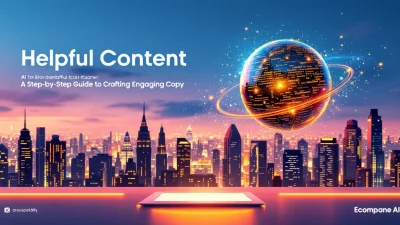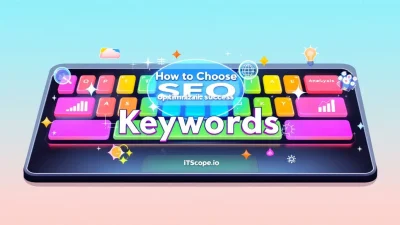Ever wondered why some guides captivate while others languish in obscurity? The secret lies in crafting good content—a blend of engagement, authority, and subtle persuasion. Today, we’re diving deep into the art of creating guides that not only inform but also inspire action and change. Whether you’re an experienced IT professional, a burgeoning digital marketer, or a tech enthusiast, mastering the art of good content can elevate your work from satisfactory to superb.
Join us as we unravel the principles of writing compelling guides, designed to catch eyes and keep readers hooked. Here’s your roadmap to professional brilliance.
Table of Contents
- The Building Blocks of Good Content
- Understanding Your Audience
- Structuring Your Guide for Maximum Impact
- Incorporating SEO Best Practices
- Engagement Techniques for Reader Retention
- Measuring Success: Metrics That Matter
- FAQs
- Conclusion
The Building Blocks of Good Content
Creating good content is both an art and a science. It’s about weaving information that captivates the reader while delivering value. But what makes content truly engaging and powerful? Let’s dive into the building blocks that lay the foundation for high quality content.
- Understand Reader Intent: Begin by identifying what your audience wants. Are they searching for tutorials, guides, or entertainment? Knowledge of their intent guides the tone and structure. Check the Google helpful content guidelines for further insights.
- Craft a Compelling Headline: A headline should grab attention while encapsulating the essence of your piece. Great headlines set expectations and hook the reader, drawing them into your narrative.
- Create Structured Content: Break your content into logical sections. Use headers, bullet points, and short paragraphs to ensure readability. This approach enhances the content quality and keeps readers engaged.
Use Visuals and Examples
Words alone might not suffice. Incorporate images, infographics, or videos to support text and exemplify points. Real-world examples transform abstract ideas into tangible concepts, making complex topics more relatable.
Key benefit of using good content: It boosts engagement and fosters trust with your audience.
Optimize for SEO
Ensure your content is discoverable by optimizing it for search engines. Use keywords like “good content” and “content quality” strategically without overstuffing. Link internally, like to our ultimate SEO guide, and externally to establish authority.
- Internal Links: Enhance user experience by directing readers to related articles, enriching their journey.
- External Links: Reference reputable sources to validate claims and provide broader context.
Understanding Your Audience
Creating good content starts with knowing your audience. Without this fundamental understanding, your message may miss the mark. So, how do you engage your target effectively? Here are key strategies to consider:
- Analyze Demographics: Understand the age, location, and interests of your audience. This knowledge allows you to tailor content to their preferences, improving content quality.
- Leverage Analytics: Utilize web analytics tools to glean insights about website visitors. This data helps refine your approach, ensuring each piece of content resonates.
- Engage Directly: Use surveys, polls, and social media to interact with your audience. Direct feedback is invaluable in crafting high quality content.
For a deeper dive into audience understanding and content crafting, explore our SEO and Content Marketing Guide.
Crafting good content hinges on understanding your audience’s needs and preferences.
| Key Factor | Description |
|---|---|
| Demographics | Age, interests, location |
| Analytics | Website visitor insights |
| Engagement | Feedback through surveys and polls |
Remember, knowing your audience transforms your content from generic to deeply engaging, establishing you as a trusted voice in your field.
Structuring Your Guide for Maximum Impact
Craftsmanship in guides hinges on structure. Properly organized good content not only captivates readers but also delivers information clearly. But how can one ensure that? Let’s delve into key steps for structuring your guide with maximum impact by using good content principles.
- Introduction with a Bang: Start with an engaging hook. Address why the topic matters to help readers invest in your guide from the get-go.
- Divide into Digestible Sections: Break your text into clear headings and subheadings. This approach enhances readability and keeps content quality at its peak. Explore this comprehensive guide for more insights on organizing your work efficiently.
- Incorporate Visuals and Examples: Use images, infographics, or tables to illustrate points. Visual aids elevate engagement and make key concepts of high quality content memorable.
- Layer in Subheadings: Assign meaningful subheadings to each section. This creates a natural flow and keeps reader interest piqued throughout the guide.
- Summarize Key Points: Conclude with a strong summary that reiterates main ideas. A well-rounded ending ensures the guide’s message sticks and encourages actions.
For more detailed pointers on fostering high quality content, explore leading content marketing insights. Additionally, dive into Google’s recommendations on creating helpful content for maximizing your guide’s impact. Remember, the higher your content quality, the more it resonates!
Key benefit of using good content: Drives engagement and clarity through well-structured narratives.
Incorporating SEO Best Practices
Creating good content means more than writing eloquent prose. It’s about aligning your content with SEO best practices to ensure visibility, engagement, and authority. Here’s how to do it effectively.
- Keyword Research: Start by researching relevant keywords like good content and high quality content using tools like Google Keyword Planner. Knowing what your audience searches for helps you target the right terms.
- Optimized Headings: Use engaging, keyword-rich headings that inform and entice readers. Include variations such as “content quality” to cover all bases and boost SEO.
- Internal and External Linking: Enhance the authority of your content by linking internally to resources like SEO and Content Marketing: The Ultimate Guide to Mastering Digital Success. Provide credibility by linking to reputable external sources like Content Marketing Institute.
- Engaging Multimedia: Keep content dynamic by adding visuals, infographics, or videos. This not only improves content quality but also enhances user experience, making your guide more attractive.
- Monitor and Adjust: Track the performance of your good content. Use analytics to see what’s working and update your approach. Visit resources like Google’s helpful content guide for ongoing improvement tips.
By incorporating SEO best practices, you maximize the reach and impact of your good content.
Remember, crafting engaging and high quality content is a continuous process. Stay updated with trends and refine your strategies regularly.
Engagement Techniques for Reader Retention
When creating good content, keeping your readers engaged is crucial. How can you hold your audience’s attention in a sea of digital noise?
- Start with a Hook: Begin your article with an interesting fact or anecdote. This draws readers in, piquing their curiosity.
- Use Interactive Elements: Including images, videos, or infographics can enhance high quality content, making it more appealing.
- Ask Questions: Posing questions invites interaction, making readers think more deeply about the topic.
- Keep it Concise: Value your reader’s time by delivering high-impact information succinctly.
- SEO Optimization: Ensure your content is easily searchable. For more details, check out our SEO and Content Marketing Guide.
Content quality is fundamental in maintaining reader interest. This means not only providing value but also ensuring your content is accessible and well-structured.
Key benefit of using good content: It drives readers to explore further, increasing both engagement and retention.
For in-depth techniques, explore Google’s insights on creating helpful content.
Measuring Success: Metrics That Matter
In the ever-evolving world of digital marketing, assessing the effectiveness of your good content is crucial. But what metrics truly signify success? Get ready to dive into key performance indicators that can amplify the quality of your content marketing.
Traffic and Engagement Metrics
Understanding the flow of traffic and user engagement can reveal the strength of your content’s pull. Here are critical metrics to monitor:
- Bounce Rate: A low bounce rate often indicates high interest. Review Google’s guidelines to enhance content quality further.
- Average Time on Page: Measure how long users stay to gauge engagement quality. Sources like the Content Marketing Institute provide deeper insights.
Conversion Metrics
Monitoring conversions helps identify if your good content leads to desired actions, which could be newsletter sign-ups or purchases. This number directly reflects the content’s power in driving business goals.
Your guide isn’t just good content when it converts readers into followers or customers.
Maximize content quality by constantly refining these metrics to align with user goals and business objectives.
FAQs
What is Good Content?
Good content is well-crafted material that accurately conveys information while engaging and retaining the reader’s attention. It aligns with the user’s intent and offers actionable insights. For more details on creating content that captivates and informs, visit this guide.
How to Improve Content Quality?
To improve content quality, focus on understanding your audience’s needs, using clear and concise language, and incorporating authoritative sources. Dive deeper into creating high-quality content by exploring our ultimate guide on SEO and content marketing.
What Makes Content High Quality?
High-quality content is defined by its relevance, accuracy, depth of research, and the value it provides to the reader. Explore more characteristics of high-quality content in this resource.
Why is Content Quality Important in SEO?
Content quality is crucial for SEO because search engines rank pages higher when they provide value and meet user intent. Maintaining high standards ensures better visibility and engagement. Learn more about content quality from Google’s helpful content guide.
How Often Should You Update Content?
Regular updates are necessary to keep content relevant and accurate. Aim to review and refresh your content every few months or whenever significant changes in your industry occur to maintain content quality.
Conclusion
In the competitive world of digital content, crafting good content that captivates and converts is no small feat. It’s about balancing creativity with strategy, ensuring that your guide is not only engaging but also packed with high-quality content. Throughout this journey, remember, content quality isn’t just about fancy words; it’s about offering genuine value to your readers.
To create truly impactful guides, focus on using relevant keywords naturally, enhancing the readability and flow of your content. Employ storytelling techniques to connect with your audience, drawing them in and keeping their attention. These elements, combined with a strategic approach, form the backbone of what makes high-quality content shine.
Invest time in quality research and thoughtful structuring to lead your readers smoothly from start to finish, guiding them through your expertly crafted content.
For more insights into optimizing your digital content strategies, explore our SEO and Content Marketing Guide. By prioritizing good content, you pave the way for digital success, establishing your brand as a leader in delivering value-driven resources.



